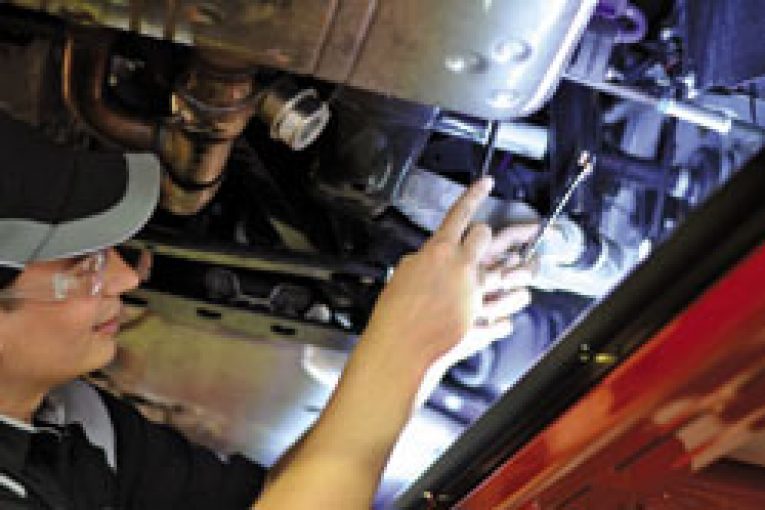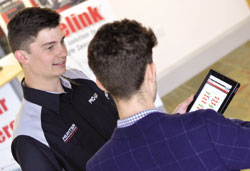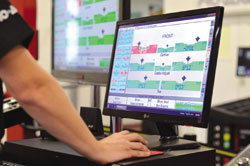
Why do my measurement readings on the screen of my imaging alignment system occasionally keep flashing from red to grey?
With an imaging alignment system it’s important that the cameras can see the position of the measurement targets properly. Not only does this mean keeping the line of sight clear, but it’s also important to make sure that the targets are kept clean and free from the normal dust, dirt and the odd greasy finger print than can be found in most workshops. Check with the equipment manufacturer about what cleaning products they recommend as it’s important that the targets are taken care of.
 Sometimes I can’t find certain cars in the vehicle database. Where can I get the alignment information?
Sometimes I can’t find certain cars in the vehicle database. Where can I get the alignment information?
Hunter’s engineers work directly with all VMs and, consequently, their alignment systems have one of the most comprehensive and accurate databases available. Finding the correct vehicle should be a simple process, but remember that there are different choices available in the international database which should be selected and searched; these are particularly relevant to Japanese and Chinese import vehicles. To identify and select the correct model codes (if they’re not known) the codes can be found on the ID plates. If you can’t find an ID plate then you will need to contact the VM or local dealer.
How do you work out ride height measurements on Renault, Citroen and Peugeot vehicles?
To give accurate alignment readings, it’s very important that ride heights, as specified by the motor manufacturer, are observed and correctly entered into the aligner. For Renaults, three ride height measurements (from points shown on the database) are needed. If you don’t enter any the system won’t give you any final alignment readings – that’s how important these manufacturers feel it is. Peugeot or Citroen ask you to achieve stated ride heights through weighting the vehicle to ensure full alignment accuracy. Although this step is ‘ignored’ by some, the alignment results will not be true or accurate and it is therefore not recommended.
 My caster reading shows green on screen but then red on the printout. Why is this?
My caster reading shows green on screen but then red on the printout. Why is this?
Once you’ve completed any necessary alignment work it’s important, as a final check, that you verify the caster angle again to make sure that it’s still correct. It’s possible that it may have changed during other geometry alterations, so it should always be checked again.
I’ve fitted and balanced a new tyre but it’s still suffering from vibration issues. How can I cure this?While all new tyres should be balanced before they’re fitted onto a car, this might not always solve vibration problems as incorrect balance may not be the only cause of the issue. All tyres, due to the way they are manufactured, have a stiff spot in the sidewall and as the tyre rolls along the road it can cause vibration issues. This is known as Road Force Variation (RFV). This problem can be minimised by ‘Force Matching’ the tyre’s stiff spot to the wheel rim’s low spot. To achieve this without pure guesswork the most effective solution is to take the assembly to a workshop that is equipped with the specialist Hunter Road Force balancer.









